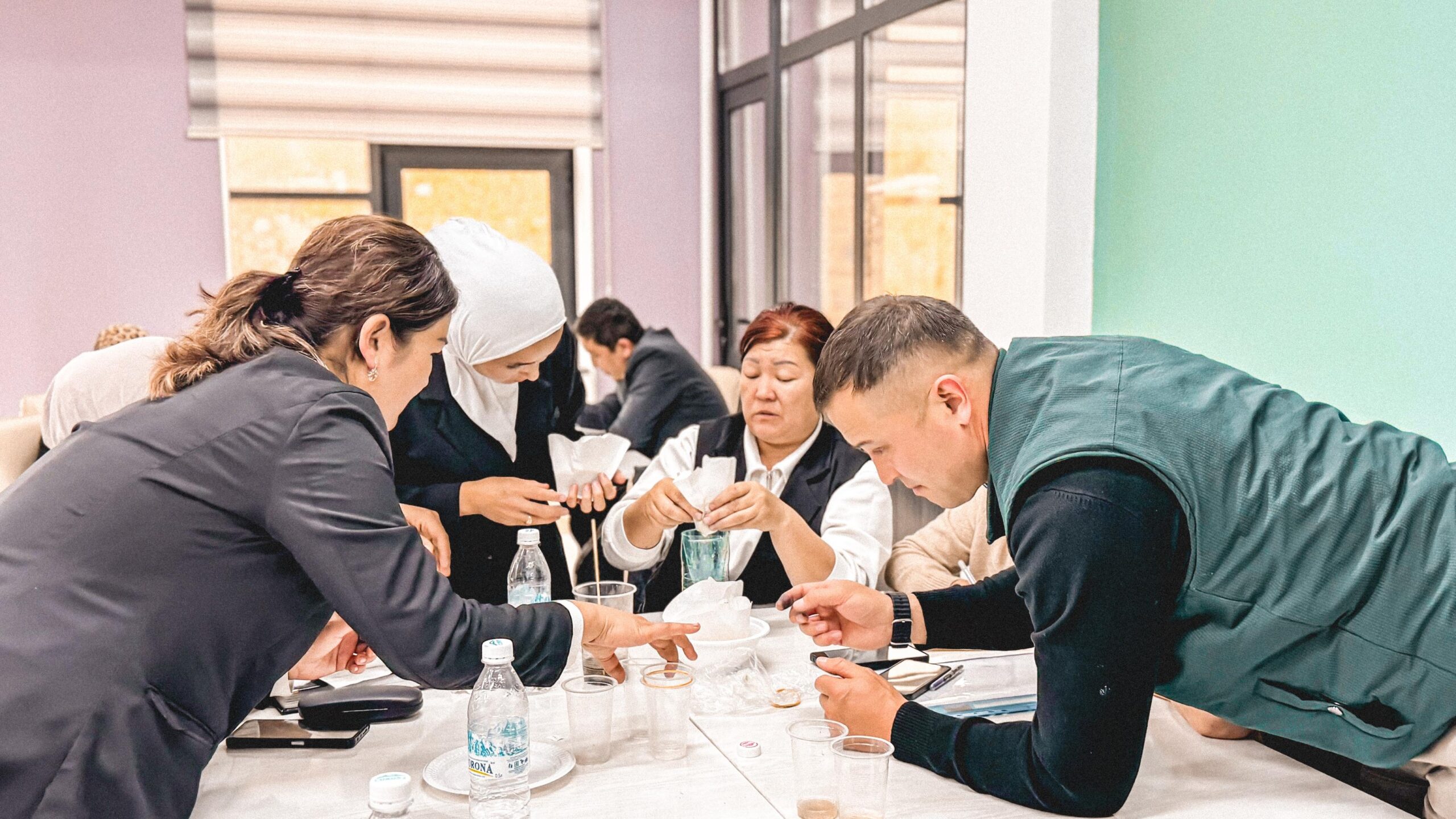On April 22, 35 dedicated teachers from pilot schools across the Osh oblasty gathered in Osh city for an intensive one day mastercalls that would fundamentally transform how they approach teaching and learning.
The STEAM (Science, Technology, Engineering, Arts, and Mathematics) training program, conducted represents more than just professional development—it’s a cornerstone initiative supporting Kyrgyzstan’s ambitious transition to a 12-year Cambridge secondary education system. As the country on the way to the comprehensive education sector reforms, programs like these are crucial for ensuring that rural schoolchildren receive the same quality of innovative education as their urban counterparts.
These 35 educators from Osh Oblast pilot schools now equipped to lead the integration of modern pedagogical approaches that align with international standards while remaining rooted in local contexts.
Led by master trainer Symbat Satybaldieva alongside co-trainers Ainaz Ysmailova and Gulmira Isakova, the program introduced teachers to cutting-edge methodologies that transform passive learning into active discovery. The training centered on several revolutionary approaches: The 5E Learning Model became the foundation for reimagining lessons. Teachers learned to structure their classes around five key phases: Engage, Explore, Explain, Elaborate, and Evaluate. This model shifts the teacher’s role from information deliverer to learning facilitator, encouraging students to construct their own understanding through guided inquiry. Growth Mindset and Neuroplasticity sessions challenged teachers to reconsider how they view student potential. By understanding that intelligence isn’t fixed but can be developed through effort and strategy, educators gained tools to help every student, regardless of their starting point, achieve academic success. PISA-aligned Tasks brought international assessment standards into local classrooms, ensuring that students develop the critical thinking and problem-solving skills needed to compete globally while addressing local challenges.
The heart of the training lay in its practical application. Teachers didn’t just learn about new methodologies—they experienced them firsthand by designing and delivering their own demo lessons. From “Birds’ Classification” to “Historical Places of Uzgen,” educators crafted innovative lessons that brought abstract concepts to life. One particularly memorable demonstration involved Newton’s third law of action and reaction, taught through a “balloon car” experiment. Students watched in amazement as simple materials transformed into vehicles that perfectly illustrated complex physics principles. This hands-on approach exemplifies how STEAM education makes learning tangible, memorable, and genuinely exciting.
The training emphasized that STEAM education isn’t just about science and mathematics—it’s about developing the critical thinking, collaboration, and problem-solving skills that define 21st-century success. Through activities like the “Marshmallow Challenge” and “Food Print Puzzles,” teachers experienced firsthand how failure becomes a learning opportunity and how teamwork amplifies individual capabilities. The integration of artificial intelligence tools introduced educators to the reality that technology isn’t replacing teachers—it’s empowering them to focus on what they do best: inspiring, guiding, and mentoring young minds.
The impact of the training resonates in teachers’ own words: “After the training, I was encouraged to work more with groups and develop logical thinking, work with real-life examples, and think in a holistic way, not just about one subject in class.” Another educator noted: “5E model, PISA test based exercises, scientific methods. I will use them in laboratory work because I am a biology teacher.” These testimonials reflect a fundamental shift in educational philosophy—from subject-specific teaching to integrated, real-world learning that prepares students for the interconnected challenges they’ll face in their careers and communities.
With an impressive post-training survey result of 8-10, the training received overwhelmingly positive feedback. But perhaps more importantly, it sparked a broader conversation about educational equity and rural development. Teachers identified concrete needs—from laboratory facilities to STEAM camps—that highlight both the challenges and opportunities in rural education.
The program’s success demonstrates that geographic isolation doesn’t have to mean educational isolation. When rural teachers receive world-class training and support, they become catalysts for community transformation, inspiring students who might never have imagined careers in science, technology, or engineering.


